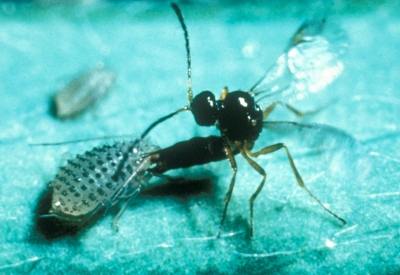
We all know what a parasite is – an organism that lives off another organism. So, what are parasitoids? They are also organisms that live off another – but this “living off pans out very differently. Come; let’s find out how it works.
The end for the hosts
Parasitoids are usually tiny insects whose eggs or larvae develop within or outside the body of another organism – normally another insect species. The most important difference between parasites and parasitoids is that the latter always kills its host. The female parasitoid adult either injects eggs into the host organism’s body or leaves them on its body. A few others deposit their eggs on the leaves that the host consumes. The parasitoid larva emerges from the egg and feeds on the host till the latter dies. And the larva goes on to become an adult, and this ritual continues. Usually, the host is also undergoing a stage in its life cycle (only this cycle doesn’t get completed). For instance, butterfly caterpillars could be hosts for flies. Most parasitoids are wasps, bees or flies, though some variety of beetles and other insects too could be parasitoids.
They are mighty useful!
Simply because a parasitoid kills its host, one need not be upset with the parasitoid’s functioning. The truth is that is how nature has intended their respective lives to be – to maintain a natural balance in the environment. In fact, parasitoids have many benefits. A significant one is that they keep large populations of plant eating insects in check. So significant that some species are raised in laboratories to control pests of “economically important crops”. Since most parasitoids attack specific host varieties, farmers know which parasitoid species must be introduced to save their crops. Also, along with parasites, parasitoids play a role in making soil nutrient-rich, since their dead hosts eventually decompose.
Picture Credit : Google




